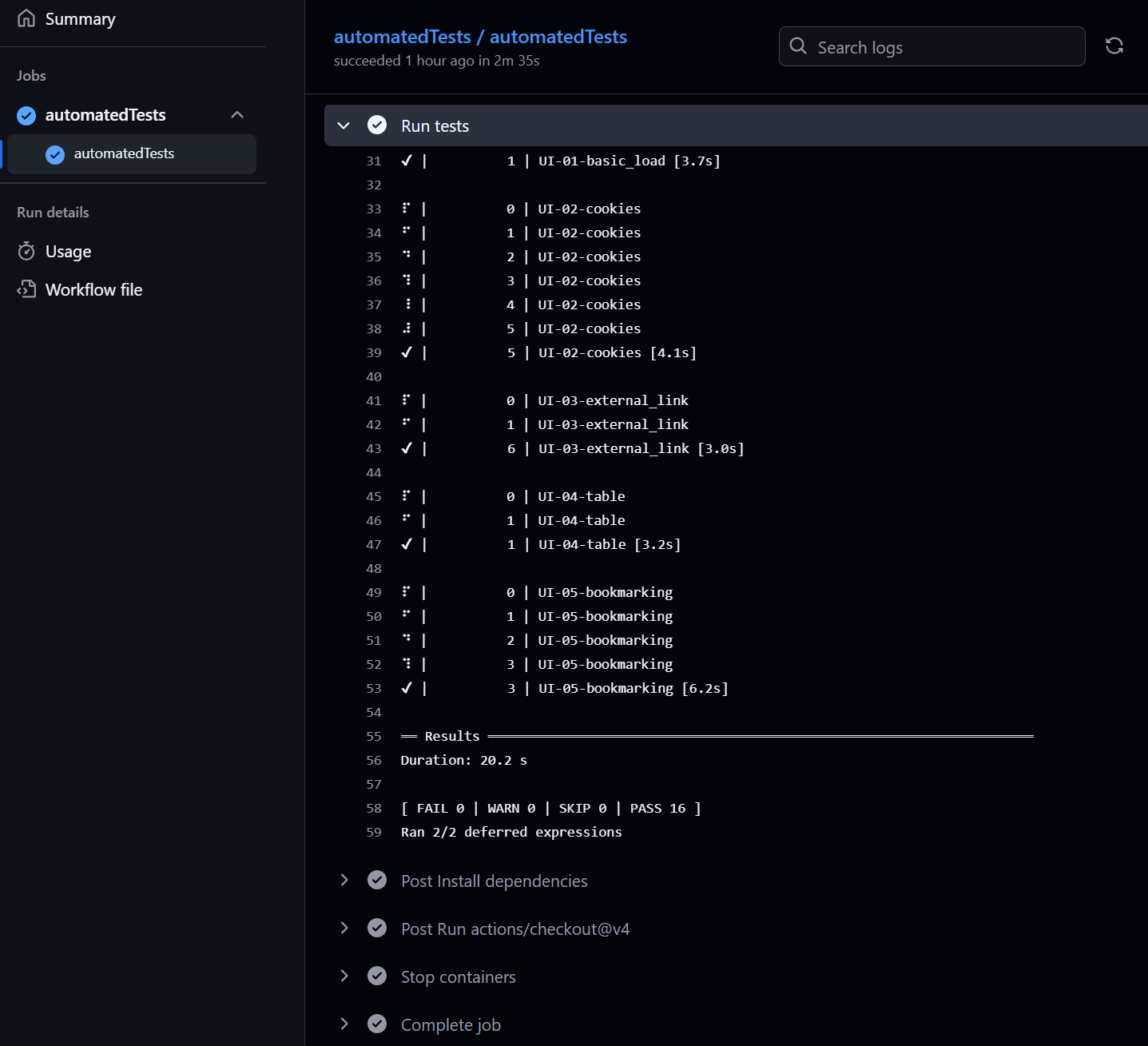
Reusable workflows
reusable-workflows.RmdWe provide several reusable GitHub Actions workflows in dfeshiny (where workflows are automated actions that can be triggered by events such as pull requests in GitHub). These are primarily intended for use with dashboards, but can also be used with other projects hosted on GitHub.
The reusable workflows covered in this article are:
- Automated tests
- Lintr
- Pull request Trello card creation
The dashboard deploy reusable workflow is covered separately in the using the dfeshiny deploy template article.
To implement automated workflows, your repository will require the folder .github/workflows/. You’ll more than likely have this folder, but if not you’ll need to create it.
Automated tests
The automated-tests reusable workflow triggers GitHub Actions to run
shinytest2::test_app() on your repository code. To enable
this, simply copy the following code into a .yaml file in the
.github/workflows/ folder of your repository.
on:
push:
branches:
- main
pull_request:
name: Test dashboard
jobs:
automatedTests:
uses: dfe-analytical-services/dfeshiny/.github/workflows/automated_tests_template.yaml@mainAnd then add > commit > push to your remote GitHub repository.
Once implemented, this will run shinytest2 whenever a
change is made to a pull request or your main branch on GitHub. The
results can be found in the checks section of your pull request and
Actions tab of your repository.
Clicking into a given test result will show the steps taken to run the automated tests and under the Run tests stage, you can find the results of the tests as shown below.

Lintr
The lintr reusable workflow triggers GitHub Actions to run
lintr::lint_dir() on your repository code. This will not
change any of your code, but will produce recommendations of
improvements to code layout and styling. To enable this, simply copy .github/workflows/lintr.yml
to the .github/workflows/ folder of your repository, change the
is_package parameter from true to false, and then add > commit >
push to your remote GitHub repository.
Once set up, lintr will run on your code anytime you create or update a pull request and when anything gets merged into main. Results will be added as comments to the relevant pull request where relavent and also available through the GitHub actions tab in the same way as the shinytest2 results above.
Pull request Trello card creation
Using the Trello API key and token
This workflow requires authorisation to access the required Trello board. This can be done at the GitHub organisation level, so requires a dfe-analytical-services admin to set up. This is done in the GitHub project (e.g. dfe-analytical-services) at Settings > Secrets and variables > Actions.
If you are setting up this workflow to create a ticket on the Statistics Development team’s board, then the Trello API key and token should already be stored under Organization secrets. To give a given repository access to these secrets:
- click the edit symbol alongside each of “TRELLO_API_KEY” and
“TRELLO_API_TOKEN”
- note that if you don’t see the edit symbols in the table alongside the above entries, you may need to click the “Manage organisation secrets button” if present
- click the settings cog next to the selected repositories dropdown
- find and tick the required repository
- click save changes
- make sure you’ve done this for both “TRELLO_API_KEY” and “TRELLO_API_TOKEN”
If you need to link to a different board or update the API key and token variables for the Statistics Development board, then refer to the create a new Trello API key section below.
Creating the workflow
To implement the workflow, you can copy .github/workflows/trello.yaml into your own repository’s .github/workflows folder.
api-key and api-token
If the target board is the Statistics development team board, then
leave the api-key and api-token variables as
is. If directing cards to a different board, then you’ll likely need
to
create a new Trello API key
and update TRELLO_API_KEY and TRELLO_API_TOKEN to the corresponding
organisation secrets for the new board.
list-id and label-ids
The list-id and label-ids parameters can then be updated as needed. For the statistics development team board the relevant codes are:
-
list-id:- In review: 63ce5064a4859b0387f46b9b
-
label-ids:- New stuff (6): 63ce4ffcbfa825468a8e2a69
- dfeshiny (9): 67b33b30b7f808294a05b1ab
To identify IDs for other items or on a different board, select a card on your Trello board and then add “.json” to the URL in the browser address box. This shows the card info in json format from which you can extract the required IDs after a bit of detective work.
Create a new Trello API key
To link to a new board or replace the key and token for access to the Statistics Development team board, you’ll first need to create a Trello Power-Up:
- Navigate to the Trello power ups admin page
- Click New
- Give the power up a name and provide your e-mail and name, click create
- Navigate to the API key page
- Copy the API key
- Back on GitHub, navigate to Organisation settings > Secrets and
variables > Actions
- If linking to a new board, click New organisation secret and paste the API key into the Value field. Choose a name for the key e.g. MY_TEAM_TRELLO_API_KEY
- If refreshing the Statistics development team key, click the edit icon for TRELLO_API_KEY, click enter a new value and paste the API key
- Back on your Trello Power up, click manually generate a
token (ignore the Secret, this is not needed).
- Click Allow and then copy the API token that’s generated
- And back to GitHub orgnasation secrets once more…
- If linking to a new board, click New organisation secret and paste the API token into the Value field. Choose a name for the key e.g. MY_TEAM_TRELLO_API_TOKEN
- If refreshing the Statistics development team key, click the edit icon for TRELLO_API_TOKEN, click enter a new value and paste the API token
As noted, the API secret is not needed. If you use this in place of the token, you’ll get a 401 error when the workflow tries to run.